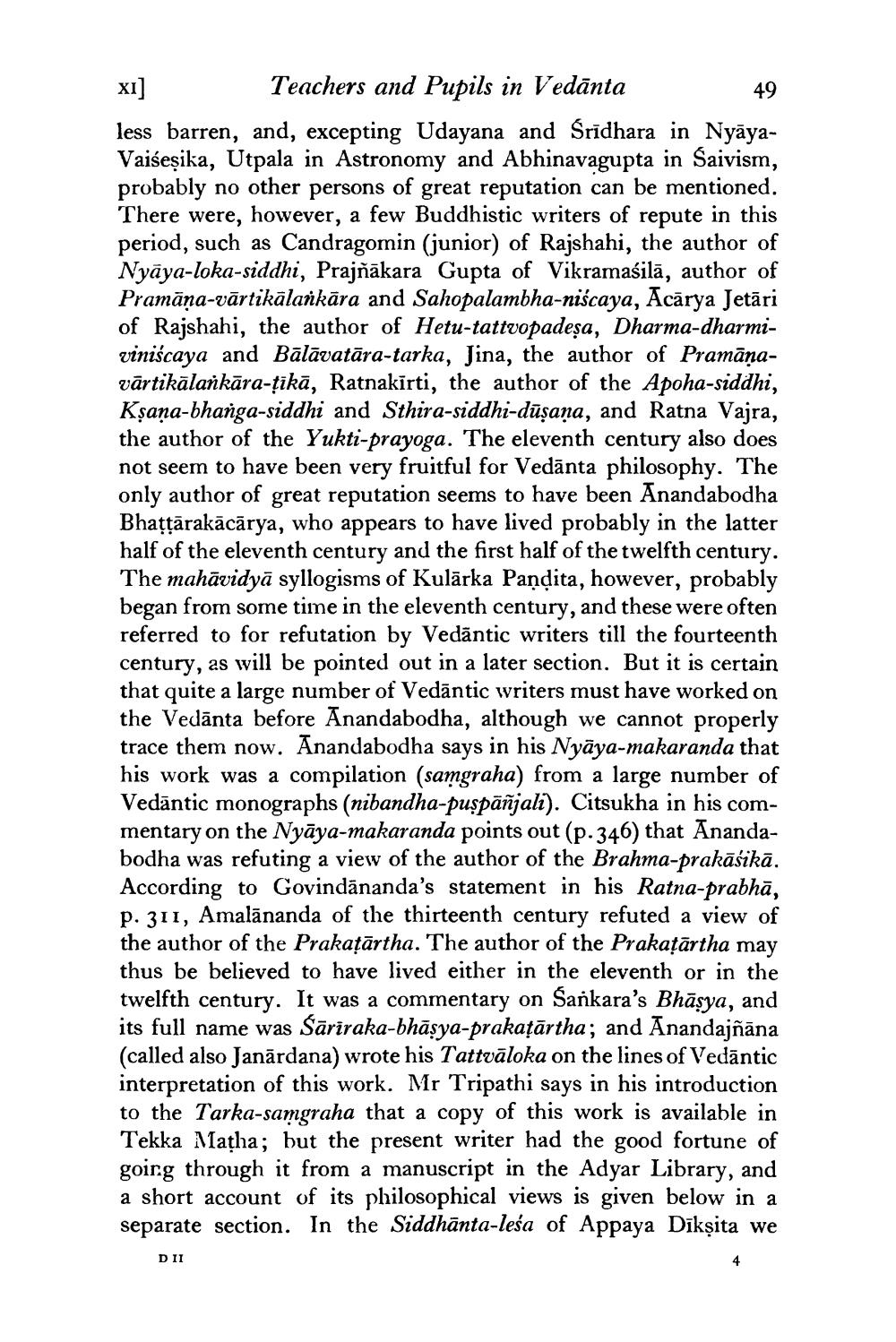________________
XI]
Teachers and Pupils in Vedanta
49
less barren, and, excepting Udayana and Śrīdhara in NyāyaVaiseṣika, Utpala in Astronomy and Abhinavagupta in Saivism, probably no other persons of great reputation can be mentioned. There were, however, a few Buddhistic writers of repute in this period, such as Candragomin (junior) of Rajshahi, the author of Nyaya-loka-siddhi, Prajñākara Gupta of Vikramasilā, author of Pramāṇa-vārtikālaṁkāra and Sahopalambha-niścaya, Acārya Jetāri of Rajshahi, the author of Hetu-tattvopadeșa, Dharma-dharmiviniscaya and Bālāvatāra-tarka, Jina, the author of Pramāṇavārtikālankāra-ṭīkā, Ratnakīrti, the author of the Apoha-siddhi, Kṣaṇa-bhanga-siddhi and Sthira-siddhi-dūṣaṇa, and Ratna Vajra, the author of the Yukti-prayoga. The eleventh century also does not seem to have been very fruitful for Vedanta philosophy. The only author of great reputation seems to have been Anandabodha Bhaṭṭārakācārya, who appears to have lived probably in the latter half of the eleventh century and the first half of the twelfth century. The mahāvidya syllogisms of Kulārka Paṇḍita, however, probably began from some time in the eleventh century, and these were often referred to for refutation by Vedantic writers till the fourteenth century, as will be pointed out in a later section. But it is certain that quite a large number of Vedantic writers must have worked on the Vedanta before Anandabodha, although we cannot properly trace them now. Anandabodha says in his Nyāya-makaranda that his work was a compilation (samgraha) from a large number of Vedantic monographs (nibandha-puṣpāñjali). Citsukha in his commentary on the Nyāya-makaranda points out (p. 346) that Anandabodha was refuting a view of the author of the Brahma-prakāśikā. According to Govindānanda's statement in his Ratna-prabhā, p. 311, Amalānanda of the thirteenth century refuted a view of the author of the Prakaṭārtha. The author of the Prakaṭārtha may thus be believed to have lived either in the eleventh or in the twelfth century. It was a commentary on Sankara's Bhāṣya, and its full name was Šārīraka-bhāṣya-prakaṭārtha; and Anandajñāna (called also Janardana) wrote his Tattvaloka on the lines of Vedāntic interpretation of this work. Mr Tripathi says in his introduction to the Tarka-samgraha that a copy of this work is available in Tekka Matha; but the present writer had the good fortune of going through it from a manuscript in the Adyar Library, and a short account of its philosophical views is given below in a separate section. In the Siddhanta-lesa of Appaya Dikṣita we
D II
4




